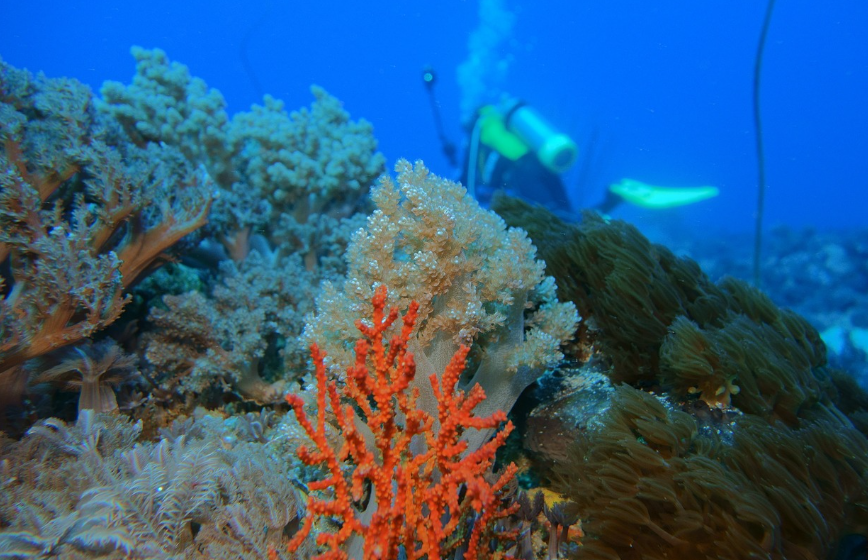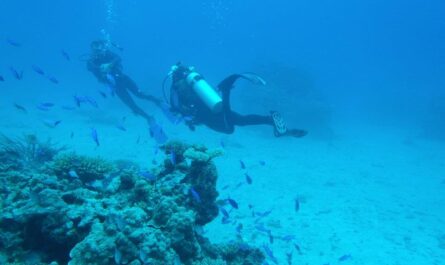The world’s coral reefs are among the most biodiverse ecosystems on the planet, providing critical habitat for marine life, protecting coastlines, and supporting local economies. However, coral reefs in the Atlantic have been suffering from widespread bleaching—a stress response to environmental factors such as rising ocean temperatures and acidification. In recent years, researchers and conservationists have been developing innovative techniques to restore these vital ecosystems and reverse coral bleaching. This article explores the causes of coral bleaching, its impact on Atlantic reefs, and the cutting-edge restoration methods that promise a more resilient and vibrant future for these underwater landscapes.
Understanding Coral Bleaching in the Atlantic
What is Coral Bleaching?
Coral bleaching is a phenomenon that occurs when corals, stressed by changes in their environment, expel the symbiotic algae (zooxanthellae) that live within their tissues. These algae are responsible for providing corals with food through photosynthesis and give them their vibrant colors. Without these algae, corals turn pale or “bleached” and, if stressful conditions persist, they risk starvation and death.
The primary triggers of coral bleaching include:
- Rising Sea Temperatures: Global warming causes ocean temperatures to rise, stressing corals beyond their tolerance levels.
- Ocean Acidification: Increased absorption of CO₂ by the oceans lowers the pH, reducing the availability of calcium carbonate needed for coral skeleton formation.
- Pollution and Overfishing: Localized pollution and unsustainable fishing practices can weaken coral ecosystems and make them more vulnerable to bleaching.
The Impact on Atlantic Coral Reefs
While the Pacific and Indian Oceans have experienced severe bleaching events, Atlantic reefs—found in regions such as the Caribbean, Gulf of Mexico, and parts of the eastern seaboard—are increasingly at risk. These ecosystems support thousands of marine species and provide essential services to coastal communities, including shoreline protection and tourism revenue. When coral reefs bleach, the cascading effects include reduced biodiversity, weakened coastal protection, and economic losses for communities that depend on healthy marine ecosystems.
Innovative Techniques for Coral Reef Restoration
In response to the escalating threat of coral bleaching, scientists and conservation organizations have been pioneering restoration techniques that aim not only to rehabilitate damaged reefs but also to enhance their resilience to future stressors. Here are some of the most promising approaches being employed in the Atlantic.
1. Coral Gardening and Fragmentation
Coral Gardening
Coral gardening is a widely used restoration method that involves growing coral fragments in controlled environments before transplanting them back to the reef. This technique starts by collecting small coral fragments from healthy donor reefs, which are then cultivated in underwater nurseries or on land-based facilities. Once the fragments have grown to a sufficient size, they are carefully transplanted to degraded reef areas.
Benefits:
- Accelerated Growth: Coral fragments often grow faster than full colonies, allowing for quicker restoration of reef areas.
- Genetic Diversity: By collecting fragments from different coral colonies, coral gardening helps maintain genetic diversity, which is crucial for the resilience of the ecosystem.
- Scalability: This method can be scaled up to restore large areas over time.
Micro-Fragmentation
Micro-fragmentation is a cutting-edge technique that involves breaking down coral colonies into tiny pieces—often just a few millimeters in size—and then reassembling them. This method capitalizes on the coral’s natural ability to fuse with nearby fragments of the same species, rapidly accelerating the growth process.
Benefits:
- Rapid Recovery: Micro-fragments can grow together to form larger, more robust colonies in a fraction of the time it would take natural growth.
- Cost-Effective: The process requires minimal resources compared to other restoration methods, making it a promising solution for large-scale projects.
- Increased Survival Rates: The controlled environment in which micro-fragments are grown reduces the risks associated with environmental stressors during the critical early stages of growth.
2. Assisted Evolution and Selective Breeding
Assisted Evolution
Assisted evolution involves intentionally exposing corals to stressors in a controlled setting to encourage the development of traits that confer increased tolerance to high temperatures and acidification. This approach can help produce “super corals” that are better equipped to survive in a warming ocean.
Methods Include:
- Thermal Stress Conditioning: Gradually exposing corals to higher temperatures to build their resistance to heat stress.
- Symbiont Manipulation: Altering the composition of the coral’s symbiotic algae to favor strains that are more resilient under thermal stress.
- Selective Breeding: Cross-breeding corals that display superior stress tolerance to develop offspring with enhanced resilience.
Benefits:
- Future-Proofing: Corals that have evolved to withstand higher temperatures and lower pH levels are more likely to survive future climate change scenarios.
- Sustainable Restoration: Assisted evolution offers a proactive approach to restoration, ensuring that restored reefs are better adapted to changing conditions.
3. Coral Probiotics and Microbial Manipulation
Recent research has highlighted the critical role of the coral microbiome in maintaining coral health. Coral probiotics involve introducing beneficial bacteria to the coral’s environment to enhance its resilience against disease and environmental stress.
Coral Probiotics
By identifying and cultivating strains of bacteria that promote coral health, scientists can inoculate weakened or bleached corals with these beneficial microbes. This intervention aims to restore the natural balance of the coral’s microbiome, potentially reversing bleaching and improving the overall health of the reef.
Benefits:
- Enhanced Disease Resistance: Beneficial bacteria can outcompete harmful pathogens, reducing the risk of coral disease.
- Improved Stress Response: A balanced microbiome helps corals better manage environmental stressors, such as temperature fluctuations and pollution.
- Scalable Solutions: Coral probiotics can be applied in conjunction with other restoration methods to boost overall success rates.
4. Artificial Reefs and Structural Interventions
Artificial reefs involve the placement of man-made structures in degraded reef areas to provide a substrate for coral larvae to attach and grow. These structures can range from purpose-built modules to repurposed materials such as decommissioned ships or concrete blocks.
Benefits of Artificial Reefs
- Habitat Creation: Artificial structures provide immediate habitat for marine life, accelerating the recovery of the ecosystem.
- Protection Against Erosion: By stabilizing the ocean floor, artificial reefs help protect coastal areas from erosion and storm surges.
- Boosting Biodiversity: As corals colonize these structures, they create a complex ecosystem that supports a diverse array of marine species.
5. Nanotechnology and Advanced Materials
Emerging research is exploring the use of nanotechnology and advanced materials in coral restoration. These technologies aim to enhance coral growth and resilience by improving the materials used in artificial reefs and other restoration structures.
Potential Applications
- Nano-Coatings: Special coatings that repel pollutants or enhance the settlement of coral larvae can be applied to artificial reefs, promoting faster colonization.
- Smart Materials: Materials that can respond to environmental changes, such as temperature or pH, could be used to create dynamic reef structures that adjust to varying conditions.
- Enhanced Substrates: Advanced materials designed to mimic natural reef structures can provide optimal conditions for coral attachment and growth.
Benefits:
- Improved Restoration Efficiency: These innovative materials can significantly speed up the restoration process.
- Long-Term Sustainability: Smart and durable materials help ensure that restoration efforts last longer and require less maintenance.
- Environmental Compatibility: Nano-coatings and similar technologies are designed to be environmentally friendly, minimizing any potential negative impacts on the surrounding ecosystem.
6. Challenges and Considerations
Environmental and Climate Uncertainty
One of the most significant challenges in coral reef restoration is the unpredictability of climate change. As ocean temperatures continue to rise and acidification intensifies, even the most resilient corals may struggle to survive. Restoration techniques must be adaptive and flexible to cope with these evolving conditions.
- Monitoring and Adaptation: Continuous monitoring of restored reefs is crucial to assess their health and make necessary adjustments. Adaptive management practices that allow for rapid response to environmental changes are essential.
- Integrated Approaches: Combining multiple restoration methods—such as assisted evolution, coral probiotics, and artificial reefs—may offer the best chance of success by addressing the problem from different angles.
Economic and Logistical Challenges
Restoring coral reefs is a complex and resource-intensive process. It involves significant investment in research, technology, and manpower.
- Funding: Securing sustained funding for long-term restoration projects can be challenging, particularly in regions with limited resources.
- Collaboration: Successful restoration requires collaboration between governments, research institutions, local communities, and international organizations. Coordinating these efforts can be logistically challenging.
- Scalability: While many innovative techniques show promise in controlled studies or small-scale projects, scaling them up to restore entire reef systems remains a formidable challenge.
Ethical and Ecological Considerations
Restoration projects must be conducted in a manner that respects the natural ecosystem. Interventions should be carefully planned to avoid unintended consequences, such as the disruption of local marine life or the introduction of non-native species.
- Ecological Balance: Ensuring that restoration efforts do not disturb the natural balance of the reef ecosystem is critical. Techniques must be tested rigorously to confirm their safety and effectiveness.
- Community Involvement: Engaging local communities in restoration projects is essential. These communities often depend on healthy reefs for their livelihoods and have valuable traditional knowledge that can inform sustainable practices.
- Long-Term Impact: Restoration projects should be evaluated not just on immediate success, but on their long-term impact on the ecosystem and the local economy.
7. Success Stories from the Atlantic
European Initiatives
Across the European Atlantic coasts, several successful coral reef restoration projects have demonstrated the potential of innovative techniques. In France and Spain, pilot projects using coral gardening and micro-fragmentation have yielded promising results, with restored reefs showing significant increases in coral cover and biodiversity. These projects highlight the effectiveness of combining traditional methods with new technologies to accelerate reef recovery.
North American Projects
In North America, regions such as the Gulf of Mexico and the Caribbean have begun to explore sustainable coral restoration practices. Collaborative efforts between government agencies, research institutions, and local communities are underway to test the viability of techniques like coral probiotics and artificial reefs. These initiatives not only aim to restore damaged reef systems but also to create models that can be replicated in other parts of the world.
Global Partnerships and Future Prospects
International collaborations are playing a pivotal role in advancing coral reef restoration in the Atlantic. Organizations like the Global Coral Reef Alliance and the Atlantic Ocean Research Institute are spearheading multi-country projects that combine research, technology, and community engagement. These partnerships are essential for sharing knowledge, resources, and best practices, ensuring that restoration efforts are as effective and sustainable as possible.
8. The Road Ahead: A Sustainable Future for Atlantic Coral Reefs
Innovation and Adaptation
The future of coral reef restoration in the Atlantic lies in the continuous evolution of innovative techniques. Researchers are exploring cutting-edge technologies, such as the use of AI-driven monitoring systems and smart materials, to enhance the efficiency and scalability of restoration efforts. These advancements hold the promise of not only restoring damaged reefs but also making them more resilient to future climate challenges.
Policy and Environmental Stewardship
Robust policy frameworks are crucial for the success of coral restoration projects. Governments and international bodies must work together to create regulations that support sustainable practices, protect marine ecosystems, and provide funding for research and restoration efforts. Environmental stewardship is not just the responsibility of scientists and conservationists—it is a shared duty that involves local communities, policymakers, and consumers alike.
Engaging the Public and Raising Awareness
Public awareness and engagement are key to driving meaningful change. Educating communities about the importance of coral reefs and the innovative techniques used to restore them can foster a sense of collective responsibility. Outreach programs, interactive exhibits, and citizen science projects can inspire individuals to support conservation efforts and adopt sustainable practices in their daily lives.
Economic Opportunities and Blue Economy
Restoring coral reefs presents not only environmental benefits but also significant economic opportunities. Healthy reefs contribute to tourism, fisheries, and coastal protection—all critical components of the blue economy. By investing in sustainable restoration, governments and private enterprises can boost local economies while safeguarding natural resources for future generations. The success of coral restoration projects can serve as a model for integrating conservation with economic development, creating a win-win scenario for both the environment and society.
9. Conclusion: Charting a Path to Resilience and Sustainability
The restoration of the Atlantic’s coral reefs is a formidable challenge, but one that is essential for the health of our oceans and the well-being of coastal communities. Innovative techniques such as coral gardening, micro-fragmentation, assisted evolution, coral probiotics, and the use of advanced materials are paving the way for a future where coral reefs can recover and thrive even in the face of climate change.
By harnessing these innovative approaches and combining them with robust policy frameworks, international collaboration, and community engagement, we have the potential to reverse coral bleaching and restore the vibrancy of the Atlantic’s marine ecosystems. The journey ahead is complex, but every restored coral colony represents a step toward a more sustainable and resilient future.
As research continues to advance and new technologies emerge, the hope is that these efforts will not only restore damaged reefs but also enhance their resilience against future environmental challenges. The benefits of a restored coral reef system extend far beyond the marine environment—supporting biodiversity, protecting coastlines, and bolstering local economies. It is a testament to the power of innovation, collaboration, and environmental stewardship.
The path to restoration is one of continuous learning, adaptation, and perseverance. With each innovative technique tested and each success story shared, we move closer to a future where our oceans are teeming with life once again. The restoration of the Atlantic’s coral reefs is not just about reversing the damage of coral bleaching—it’s about charting a new course toward sustainability, resilience, and hope for generations to come.
In the end, the fight to restore our coral reefs is a fight for the future of our planet. It is an endeavor that requires the combined efforts of scientists, policymakers, local communities, and individuals. Together, we can create a future where the hidden mountains of the Atlantic not only rise again but flourish as vibrant, living ecosystems that support both human and marine life.



